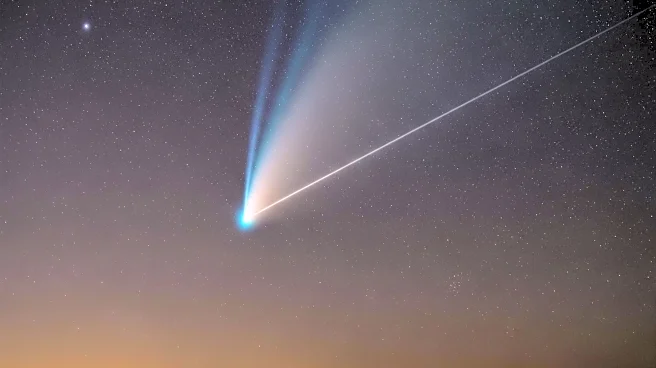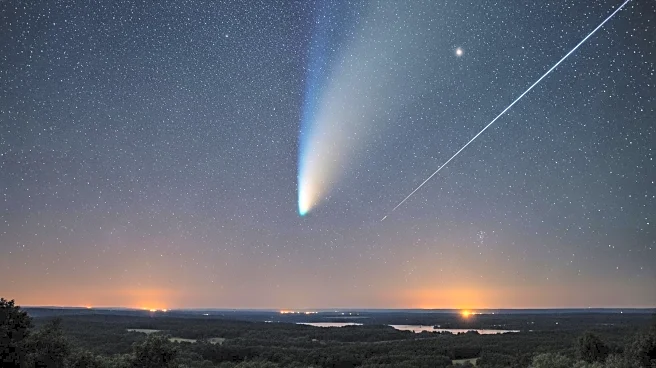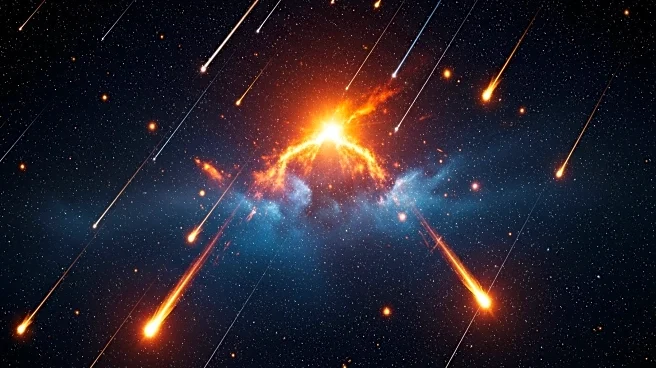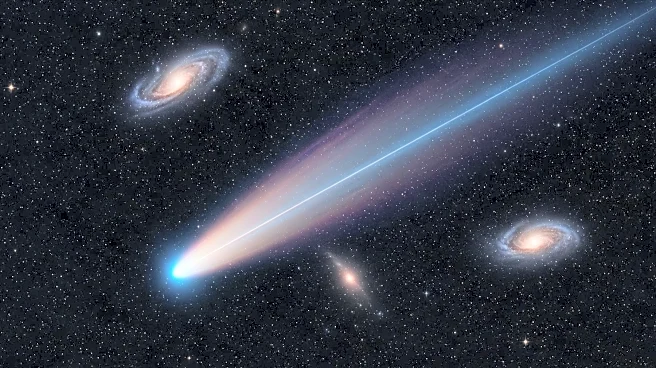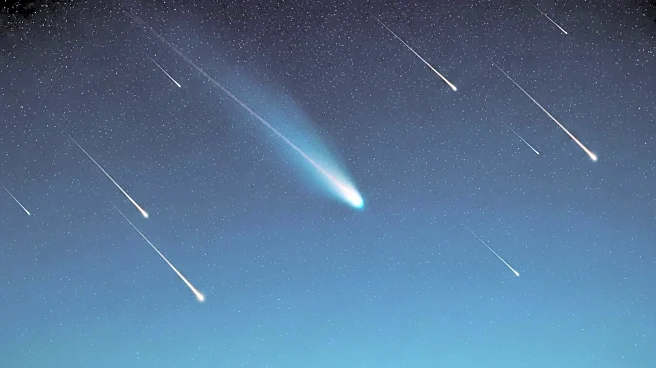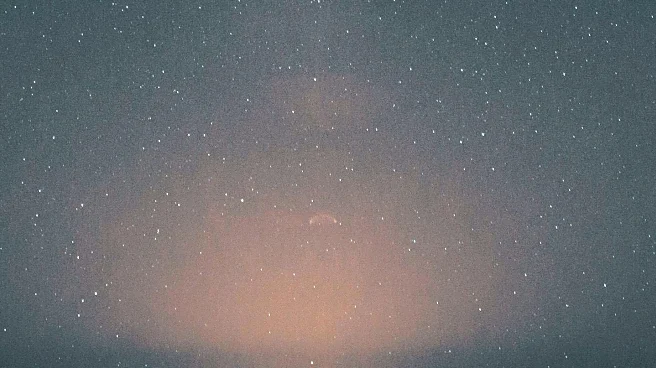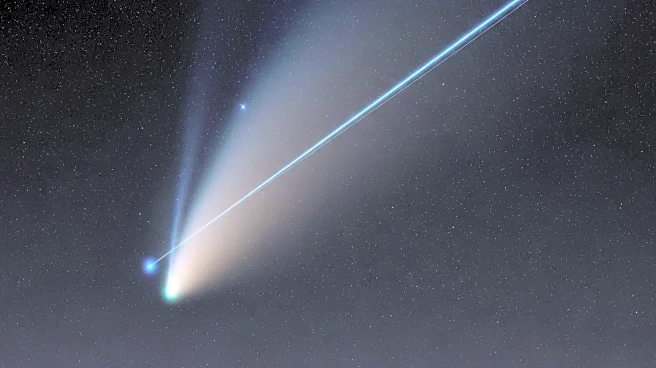What's Happening?
Comet C/2025 A6 (Lemmon) is currently visible in the predawn sky, observed at magnitude 5.7 within the constellation Canes Venatici. The comet is positioned approximately 1.5° southeast of Chara and is expected
to reach its closest approach to Earth on October 21. Observational recommendations include using binoculars or low-power telescope eyepieces to spot the comet, which may display a green coma due to diatomic carbon excited by sunlight. The waning crescent Moon will be visible near Regulus in Leo, providing additional celestial sights for stargazers.
Why It's Important?
The visibility of Comet Lemmon offers a unique opportunity for astronomers and enthusiasts to observe a celestial event that occurs once every 1,350 years. This event is significant for scientific research, allowing astronomers to study the comet's characteristics and behavior. For the public, it provides an engaging way to connect with astronomy and appreciate the night sky. The event also emphasizes the importance of preserving dark sky locations for optimal viewing conditions and reducing light pollution.
What's Next?
As Comet Lemmon approaches its closest point to Earth, astronomers will continue to track its brightness and trajectory. Observatories and astronomy clubs may host viewing events and provide guidance on how to observe the comet. The comet's visibility will be monitored to predict its appearance in different regions. Educational initiatives may be launched to inform the public about comets and their role in the solar system.
Beyond the Headlines
The appearance of Comet Lemmon highlights the importance of dark sky preservation and the impact of light pollution on astronomical observations. It also underscores the role of observatories and astronomy organizations in promoting public interest in space science. The event may inspire future generations to pursue careers in astronomy and related fields, contributing to scientific advancements and exploration.
